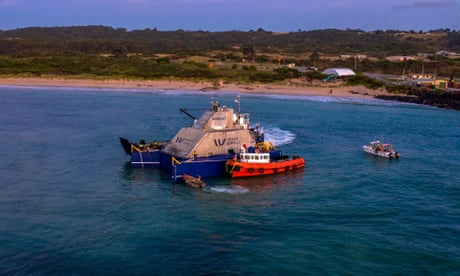- by foxnews
- 08 Apr 2025
Wave energy machines on Australian south coast would slash renewable energy costs, CSIRO says
Wave energy machines on Australian south coast would slash renewable energy costs, CSIRO says
- by theguardian
- 05 Oct 2022
- in news

The report was commissioned by Wave Swell Energy, an Australian company that has just finished a 12-month trial of its pilot plant on a beach at King Island, north of Tasmania.
Paul Geason, CEO of Wave Swell, said the trial showed the unit was able to capture about half of the energy in the waves as they passed under the unit, which is anchored by weight in about 10 metres of water.
He said the consistency of waves coming in to shore meant power from the unit was available for long periods.
The Australian Renewable Energy Agency gave the company $4m to help design, build and deploy the $12m demonstration plant at King Island, off Tasmania.
The site was not picked for the most energy intensive waves, but for accessibility and the variety of wave action.
The CSIRO report modelled the affect of deploying 1MW-sized wave plants like the unit at King Island at three locations: Cape Nelson and Warrnambool, both in western Victoria, and Carpenter Rocks in South Australia.
Adding wave energy to a power grid with solar, offshore wind and batteries halved the capital cost of the system, it found.
Dr Peter Osman, an engineer and honorary fellow at CSIRO and a co-author of the report, said adding wave energy to grids with lots of solar and wind made the system more reliable and stable.
The demonstration unit was built in Tasmania, but the company is eyeing markets in Europe and the US.
Stephanie Thornton, manager of the industry-led Australian Ocean Energy Group, of which Wave Swell is a member, said wave energy was less mature than other renewables but the technology for wave and tidal power was diverse.
- by foxnews
- descember 09, 2016
Ancient settlement reveals remains of 1,800-year-old dog, baffling experts: 'Preserved quite well'
Archaeologists have recently unearthed the remarkably well-preserved remains of a dog from ancient Rome, shedding light on the widespread practice of ritual sacrifice in antiquity.
read more


